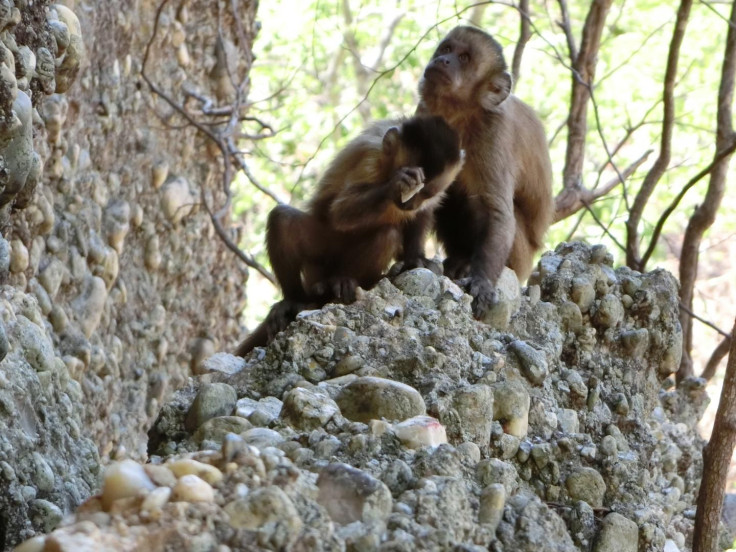Wild Monkeys Create Stone Tools Unintentionally, Diluting Trait Considered Uniquely Human

Wild-bearded capuchin monkeys in Brazil have been observed creating sharp-edged stone flakes — similar to primitive stone tools — unintentionally while they deliberately break stones to extract minerals and lichens from within them. The observation is important because the creation of stone flakes with characteristics that enabled them to be used as tools is considered a trait unique to humans and our closest ancestors, the hominins.
That capuchins are smart is not news. A study published in July this year showed the bearded capuchins in Brazil have been using “stone hammer and anvils” to get at food inside a hard covering for “at least 600 to 700 years.”
However, in this case, a clear distinction is to be made between the stone flakes produced by the capuchins and the tools used by early Homo sapiens and their close relatives. The flakes created by capuchins are merely a by-product of their use of the “hammer and anvil” technique. While the flakes share characteristics — such as sharp edges and conchoidal fractures — with hominin stone tools, they are not used as such by the monkeys. Hominins, on the other hand, used the sharp flakes as tools for cutting and butchering.
A team of researchers from University of Oxford, University College London and University of São Paulo authored a paper on the subject that was published in the journal Nature on Wednesday under the title “Wild monkeys flake stone tools.”
Lead author of the paper, Dr. Tomos Proffitt from the School of Archaeology at the University of Oxford, said in a statement the study does not negate the idea that the oldest stone tools found in East Africa were made by hominins.
“It does, however, raise interesting questions about the possible ways this stone tool technology developed before the earliest examples in the archaeological record appeared. It also tells us what this stone tool technology might look like. There are important questions too about the uniqueness of early hominin behaviour. These findings challenge previous ideas about the minimum level of cognitive and morphological complexity required to produce numerous conchoidal flakes,” he said.
These observations were also the first time wild primates were seen to be using stones for the explicit purpose of damaging other stones.
Michael Haslam, co-author of the new paper and lead author of the July study, said in the statement: “While humans are not unique in making this [stone tool] technology, the manner in which they used them is still very different to what the monkeys seem capable of.”
© Copyright IBTimes 2024. All rights reserved.





















